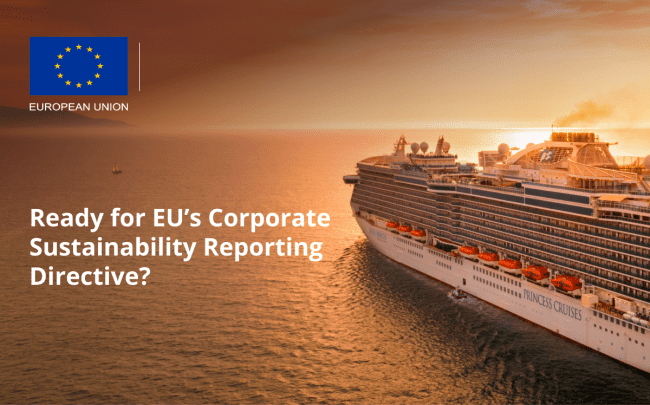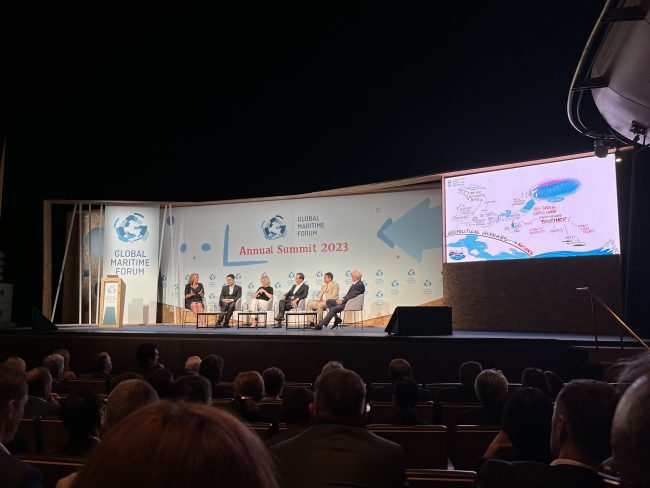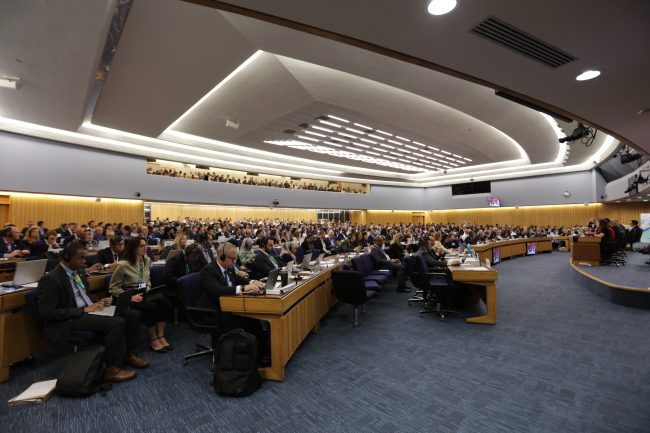How vulnerable is your vessel to flooding? A new framework to monitor risk proactively
Taking ship safety to new heights, NAPA has developed an innovative framework to enable passenger ships to assess and monitor operational flooding risks rapidly and proactively. Building on NAPA’s experience with the development and deployment of its Emergency Computer, this new framework is a significant development as it enables risk to be calculated more accurately from actual conditions. This could lead to significant improvements for passenger vessel safety, as lessons from the past have shown how important risk awareness can be to saving lives.
History has shown that the way watertight doors are operated on board can make a tremendous difference on ship safety in case of an accident. When a ferry collided with a cargo vessel off the coast of Sweden in 2004, the initial collision damage was limited to a single watertight compartment – but due to several open doors, flooding progressed to other compartments and water reached the engine room, putting the vessel at risk of sinking. This is a striking example of how open doors in watertight bulkheads can significantly increase the vulnerability of a ship when an incident such as a collision or grounding occurs, potentially endangering ship stability.
Past incidents have also demonstrated that the rapid closure of open watertight doors in case of an incident may not always be possible. For example, when a RoRo ship ran aground in Canada in 2006, a door became jammed with debris after the collision and therefore could not be closed. The vessel sank, and two passengers lost their lives in the accident.
A clear lesson learned from the past is that keeping watertight doors open for longer than necessary for the safe passage of crew can compromise the integrity of the ship. Aware of this fact, several shipping and insurance companies offer training to their crews on the safe operation of watertight doors. However, this is one of many important considerations, which also include human factors such as the mental workload of a ship’s navigator in crowded waterways or low visibility. Therefore, the evaluation of risk levels must include an assessment of how high workload for the crews increases navigational risk, which can ultimately lead to an accident in a given traffic and environmental situation.
Therefore, to understand the different complex factors involved and how they interact, we can think of the risk as the combination of two dimensions: a ship’s susceptibility to having an accident and its vulnerability to flooding as a result.
Susceptibility and vulnerability
A ship’s susceptibility consists in the likelihood of an accident and its potential consequences, depending on the waterway, traffic density, and environmental complexities. Vulnerability, on the other hand, relates to a vessel’s ability to withstand the effects of flooding, the main component of which is the effect of open watertight doors on damage stability.
Currently, these two elements are often treated separately, or the metrics don’t allow for the active control of the risks. SOLAS has evolved, in part as a result of past incidents, but the current IMO framework (Formal Safety Assessment) remains inadequate, with problematic definitions and a lack of precise quantification of the probabilities and consequences. The classical approach, a probabilistic model based on proximity indicators (such as distance and time to the closest point of approach), is insufficient.
We need a new approach that monitors the safety of a ship in a proactive manner, accounting for relevant and observable factors such as the status of watertight doors, navigator workload, nearby maritime traffic and bathymetry.
NAPA, in partnership with researchers from academia, set to work on the task several years ago. We have now developed a new framework for the onboard assessment and monitoring of flooding risk that can be used by both crew and shoreside personnel to make day-to-day operations safer and emergency response more effective.
How this works in practice
The new flooding risk framework is based on the actual operational conditions, and it can rapidly evaluate a ship’s vulnerability to flooding for any combination of open or closed watertight doors. It accounts for measurable risk-affecting factors influencing an accident and its aftermath, using data on surrounding maritime traffic and bathymetry. Additional pre-calculated and vessel-specific damage stability risks enable rapid flooding risk assessment.
Rather than determining the risk purely as a mathematical probability, the framework defines both susceptibility and vulnerability in a way that informs stakeholders on the available decisions that can be taken to reduce risk while also accounting for inherent uncertainties.
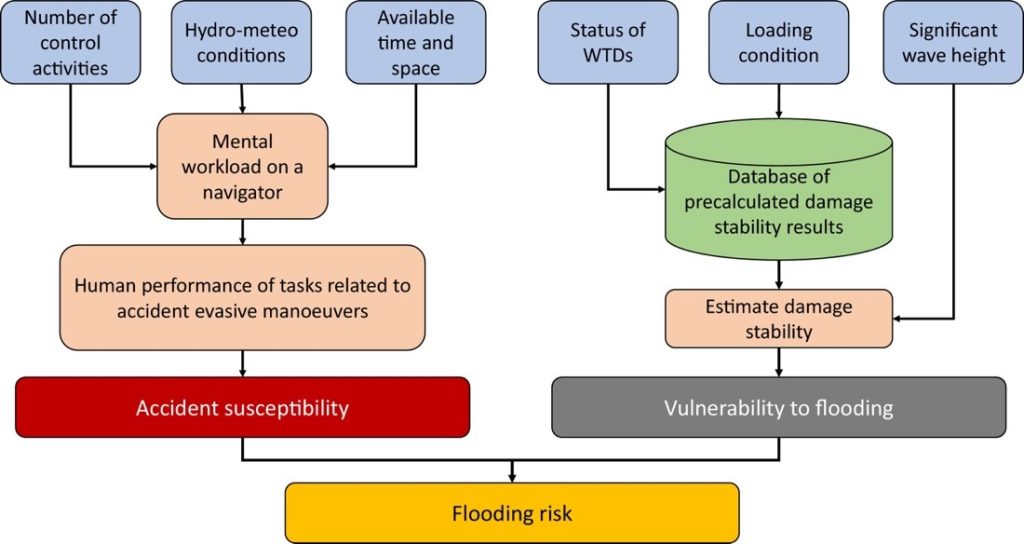
The new risk framework brings together the two indexes – susceptibility and vulnerability – for effective risk management based on actual operational conditions
A susceptibility index distinguishes dangerous situations from moderately hazardous and non-hazardous ones, based on factors such as the complexity of the waterways, the traffic and the environment. This aligns with onboard navigational practices where the navigator should detect and avoid collision situations.
A vulnerability index estimates the decrease in survivability of the ship due to open watertight doors and factors such as sea state. It distinguishes between various accident scenarios by assigning them a level ranging from low, moderate, high and very high. Although a qualitative result, it is based on extensive computations.
Bringing these two indexes together, a colour-coding system is used to distinguish among risk levels and to foster clear communication in an emergency situation. For good visibility conditions, the highest risk is when a ship is exposed to hazardous encounters with other ships or land, and the vulnerability is also high or very high if numerous watertight doors are open. At the other end of the scale, a ship faces low risk when it is safe from hazardous situations and few, if any, doors are open.

The framework comprises a suggested color coding and threshold values for the vulnerability level.
In regular ship operations, a very high risk (colour code: black) should be avoided because it leaves little or no room for improvement in case of an accident. The bridge team should not allow such situations to develop. A moderate risk (colour code: yellow) is acceptable for longer periods only when it is dictated by the operational environment or when maintenance work requires open watertight doors. Long periods of high-risk situations should always be reviewed afterwards with the aim of improving practices to avoid such situations in the future.
Managing risk proactively
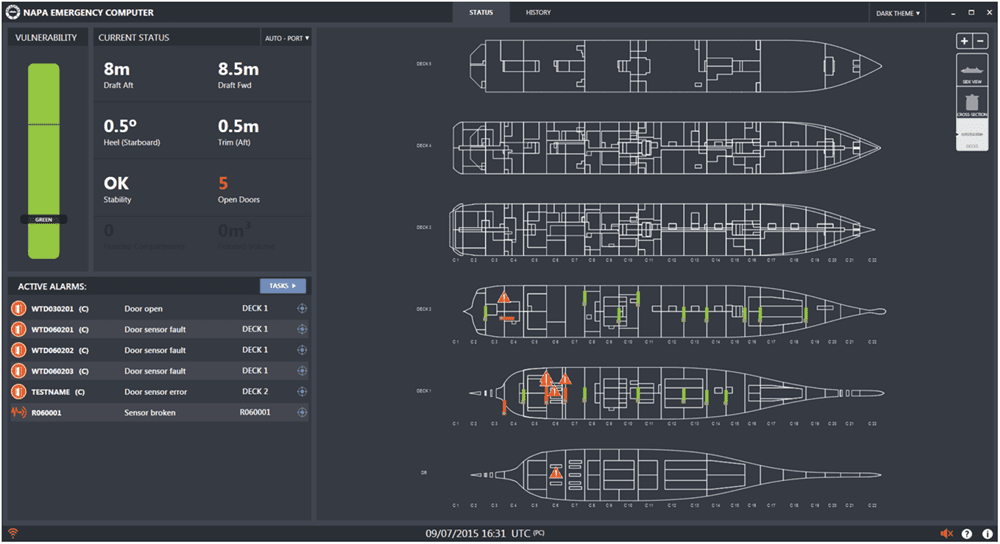
NAPA Emergency Computer’s vulnerability monitoring is needed to increase awareness of an intact ship’s safety level by taking into account potential risks. NAPA Emergency Computer continuously monitors for faulty sensors, open watertight doors and sea condition. The overall vulnerability level is shown as a green-yellow-red color code.
Building on existing NAPA solutions including NAPA Emergency Computer and Status Board and NAPA Fleet Intelligence, the new framework should be seen as an operational guidance tool for the crew, allowing them to take proactive risk mitigation actions that will reduce susceptibility, vulnerability, or both. This dynamic safety barrier increases the crew’s situational awareness and ship safety, as being aware of risks makes you act on minimizing them.
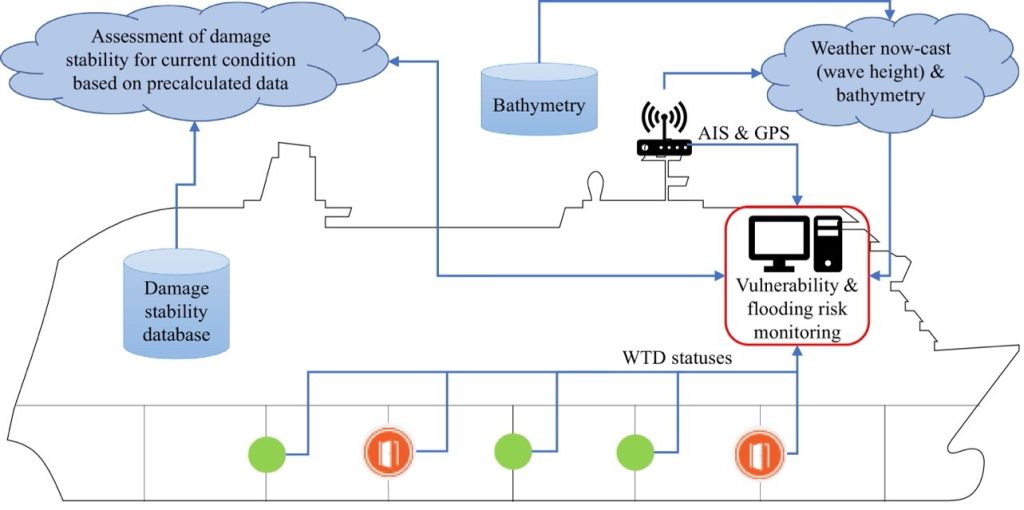
A cloud-based solution enables the real-time monitoring of the flooding risk for a fleet, and feedback from shore-based experts can be used to improve practices onboard
A cloud-based solution enables the real-time monitoring of the flooding risk for a fleet, and feedback from shore-based experts can be used to improve practices onboard.
The required input data for the framework (actual loading condition, watertight door status, AIS data for nearby ships, bathymetry, and weather now-case) is already available through various systems, but not yet integrated into a single platform for risk monitoring. As most of the required input data is readily available from the automated systems on board, we believe that our new framework for the onboard assessment and monitoring of flooding risk could easily be installed on board the existing fleet.
It is important that passenger ship operators, onboard and shoreside, understand the importance of continuously and proactively monitoring the flooding risk factors of a ship, to enhance safety throughout the voyage at sea. In our next blog, we will demonstrate the power of the new framework to help them do this through practical case studies.
Based on “A framework for onboard assessment of monitoring of flooding risk due to open watertight doors for passenger ships” by Pekka Ruponen, Jakub Montewka, Markus Tompuri, Teemu Manderbacka, Spyros Hirdaris. Published in Reliability Engineering & System Safety, Volume 226, October 2022
Read the full research paper here